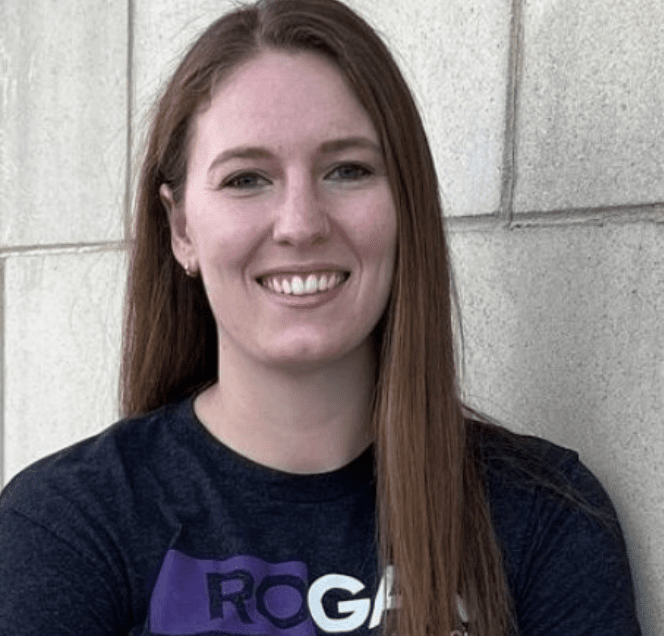
Myth Busting: Is Running Bad for my Knees?

Myth Busting: Is Running Bad for my Knees?
Short Answer: No
It is a common myth that running is hard on joints and leads to arthritis. We wanted to put this myth to rest so we read up on the latest research. One study we found showed that running improves knee joint health in novice runners compared to sedentary individuals. Two more studies found that running does not result in changes or damage in hip joints. The final study we looked at was the most surprising. It showed that middle-aged men who were long-term runners had 20% greater spinal disc height! (Decreased disc height indicates degenerative changes, which is sometimes referred to as “arthritis in the spine”). Furthermore, the study concluded that increased spinal disc health correlated to increased years of running and increased weekly running milage.
—Dr. Lauren Bowen, DC
References:
Horga LM, Henckel J, Fotiadou A, Di Laura A, Hirschmann A, Hart A. 3.0 T MRI findings of 104 hips of asymptomatic adults: from non-runners to ultra-distance runners. BMJ Open Sport Exerc Med. 2021 May 21;7(2):e000997. doi: 10.1136/bmjsem-2020-000997. PMID: 34104474; PMCID: PMC8144041.
Horga LM, Henckel J, Fotiadou A, Di Laura A, Hirschmann AC, Hart AJ. Magnetic Resonance Imaging of the Hips of Runners Before and After Their First Marathon Run: Effect of Training for and Completing a Marathon. Orthop J Sports Med. 2021 Jul 26;9(7):23259671211010405. doi: 10.1177/23259671211010405. PMID: 34377710; PMCID: PMC8320584.
Mitchell UH, Bowden JA, Larson RE, Belavy DL, Owen PJ. Long-term running in middle-aged men and intervertebral disc health, a cross-sectional pilot study. PLoS One. 2020 Feb 21;15(2):e0229457. doi: 10.1371/journal.pone.0229457. PMID: 32084224; PMCID: PMC7034897.
Van Ginckel A, Baelde N, Almqvist KF, Roosen P, McNair P, Witvrouw E. Functional adaptation of knee cartilage in asymptomatic female novice runners compared to sedentary controls. A longitudinal analysis using delayed Gadolinium Enhanced Magnetic Resonance Imaging of Cartilage (dGEMRIC). Osteoarthritis Cartilage. 2010 Dec;18(12):1564-9. doi: 10.1016/j.joca.2010.10.007. Epub 2010 Oct 13. PMID: 20950697
It is a common myth that running is hard on joints and leads to arthritis. We wanted to put this myth to rest so we read up on the latest research. One study we found showed that running improves knee joint health in novice runners compared to sedentary individuals. Two more studies found that running does not result in changes or damage in hip joints. The final study we looked at was the most surprising. It showed that middle-aged men who were long-term runners had 20% greater spinal disc height! (Decreased disc height indicates degenerative changes, which is sometimes referred to as “arthritis in the spine”). Furthermore, the study concluded that increased spinal disc health correlated to increased years of running and increased weekly running milage.
—Dr. Lauren Bowen, DC
References:
Horga LM, Henckel J, Fotiadou A, Di Laura A, Hirschmann A, Hart A. 3.0 T MRI findings of 104 hips of asymptomatic adults: from non-runners to ultra-distance runners. BMJ Open Sport Exerc Med. 2021 May 21;7(2):e000997. doi: 10.1136/bmjsem-2020-000997. PMID: 34104474; PMCID: PMC8144041.
Horga LM, Henckel J, Fotiadou A, Di Laura A, Hirschmann AC, Hart AJ. Magnetic Resonance Imaging of the Hips of Runners Before and After Their First Marathon Run: Effect of Training for and Completing a Marathon. Orthop J Sports Med. 2021 Jul 26;9(7):23259671211010405. doi: 10.1177/23259671211010405. PMID: 34377710; PMCID: PMC8320584.
Mitchell UH, Bowden JA, Larson RE, Belavy DL, Owen PJ. Long-term running in middle-aged men and intervertebral disc health, a cross-sectional pilot study. PLoS One. 2020 Feb 21;15(2):e0229457. doi: 10.1371/journal.pone.0229457. PMID: 32084224; PMCID: PMC7034897.
Van Ginckel A, Baelde N, Almqvist KF, Roosen P, McNair P, Witvrouw E. Functional adaptation of knee cartilage in asymptomatic female novice runners compared to sedentary controls. A longitudinal analysis using delayed Gadolinium Enhanced Magnetic Resonance Imaging of Cartilage (dGEMRIC). Osteoarthritis Cartilage. 2010 Dec;18(12):1564-9. doi: 10.1016/j.joca.2010.10.007. Epub 2010 Oct 13. PMID: 20950697
Lauren Bowen
Dr. Lauren Bowen was born and raised in northeast Ohio. Her love of sports and physical activity lead her to graduate with a degree in Exercise Science Education from The Ohio State University before pursuing her Doctor of Chiropractic degree at Logan University. At Logan University she graduated summa cum laude, on the President’s Honor Roll, and with the Logan LEADER Award. Outside of the standard curriculum she has attended many seminars on topics like dry needling, sports rehabilitation, movement optimization and more. She uses multiple techniques including chiropractic manipulation, instrument-assisted soft tissue, cupping, exercise, dynamic neuromuscular stabilization (DNS), McKenzie (MDT), and more. Using these various techniques she tailors individualized care for each patient. She loves working with patients to help them live active & pain-free lives.
In her free time, Dr. Bowen loves watching Cleveland/OSU sports, cooking, playing pick-up sports and exploring Charlotte. She is excited to call Charlotte her new home, and can’t wait to be involved in the community.
Where you can find out about scheduling with Dr. Bowen: https://www.rogansportsclinic.com/
LAUREN’S CERTIFICATIONS:
McKenzie Method Part A, B, C & D
Dry Needling Technique
Dynamic Neuromuscular Stabilization (DNS)
Selective Functional Movement Assessment (SFMA) Level 1
Active Release Technique (ART) Spine
In her free time, Dr. Bowen loves watching Cleveland/OSU sports, cooking, playing pick-up sports and exploring Charlotte. She is excited to call Charlotte her new home, and can’t wait to be involved in the community.
Where you can find out about scheduling with Dr. Bowen: https://www.rogansportsclinic.com/
LAUREN’S CERTIFICATIONS:
McKenzie Method Part A, B, C & D
Dry Needling Technique
Dynamic Neuromuscular Stabilization (DNS)
Selective Functional Movement Assessment (SFMA) Level 1
Active Release Technique (ART) Spine
